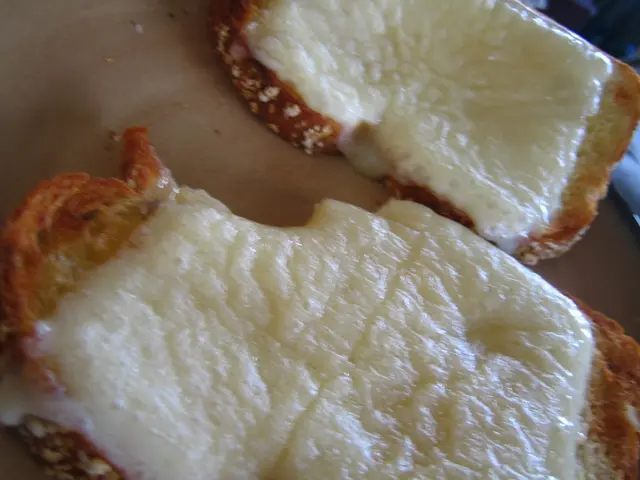Strategies for Eradicating Boxcar Scar Acne Marks: Exploring Effective Remedies
Boxcar acne scars, a type of atrophic scar, can significantly impact one's appearance and self-confidence. Fortunately, several dermatological procedures have been developed to reduce their appearance. This article explores the most effective treatments for boxcar scars, focusing on stimulating collagen production, skin remodeling, and resurfacing scar tissue.
1. **Microneedling with Radio-frequency**: This advanced treatment creates tiny punctures in the scarred skin, combined with radio-frequency energy, to promote collagen growth and improve skin texture, effectively reducing scar depth [1][4].
2. **Chemical Peels (including TCA CROSS)**: Chemical peels exfoliate scarred tissue to reveal new skin, with stronger peels like high-strength trichloroacetic acid (TCA) applied directly to scars (CROSS technique) stimulating collagen and remodeling skin. This is effective especially for narrow boxcar scars and requires professional application [1][2][3].
3. **Laser Skin Resurfacing**: Laser treatments penetrate the skin to encourage collagen production and regeneration, reducing mild to moderate boxcar scars. Laser combined with chemical peels tends to yield better results [1][2].
4. **Punch Excision and Punch Elevation**: These surgical methods physically remove or elevate scar tissue, suitable for deep or wide boxcar scars. Punch excision involves removing the scar and stitching the wound, while punch elevation lifts the scar tissue to level with surrounding skin [2].
5. **Subcision**: A minor surgical procedure where a needle is used beneath the scar to break fibrous tissue, releasing and elevating the scar. This is effective for various scar depths and types and often paired with other treatments [2][4].
6. **Fillers**: Injectable fillers, such as hyaluronic acid or collagen stimulators, can be used for a small number of boxcar scars to plump depressed areas, offering immediate but temporary improvement [3].
It's essential to note that deeper chemical peels should only be performed by skilled professionals due to risks, especially for people with darker skin tones due to possible hyperpigmentation [3]. Combining treatments (e.g., laser plus chemical peels or microneedling) often provides the best outcomes [1][2]. Cryotherapy and corticosteroid injections are generally not effective for acne boxcar scars but used for other scar types like keloids [4].
The treatment plan is usually personalized based on scar depth, size, and skin type, often involving a combination of therapies for optimal improvement [1][2]. Boxcar scars can form as a result of acne or chickenpox. Fillers are skin injections that contain substances to plump up the skin and reduce pitting.
A 2019 study suggests that over 2 years, the combination of subcision and PRP can improve scars by a greater amount than subcision alone [5]. Subcision separates scar tissue from the skin, allowing the body to produce collagen as the skin heals.
Remember, it's crucial to sterilize dermarollers properly, replace the needle head every 100 uses, and use the roller up to twice per week for safe use at home. Boxcar scars can have a significant impact on mental health, and speaking to a doctor or dermatologist about treatment options is recommended.
References: [1] American Academy of Dermatology. (2021). Boxcar scars. Retrieved from https://www.aad.org/public/diseases/acne-and-rosacea/acne/dermabrasion-and-microdermabrasion/boxcar-scars [2] Mayo Clinic. (2021). Boxcar scars. Retrieved from https://www.mayoclinic.org/diseases-conditions/acne/in-depth/boxcar-scars/art-20046385 [3] Skincare Physicians. (2021). Chemical Peels. Retrieved from https://www.skincarephysicians.com/library/peels/peels.html [4] Skincare Physicians. (2021). Subcision. Retrieved from https://www.skincarephysicians.com/library/subcision/subcision.html [5] Lee, Y. H., Kim, J. Y., Kim, H. J., & Lee, J. Y. (2019). Comparison of the efficacy between subcision and PRP for the treatment of atrophic acne scars. Journal of Dermatology. 46(11), 1177-1182. doi: 10.1111/1346-8138.14764
- While chemical peels and laser treatments significantly minimize the appearance of boxcar scars, depression-related mental issues like anxiety and low self-esteem may persist, making mental-health counseling an essential aspect of holistic healing [1][6].
- Boxcar scars can also be associated with chronic conditions such as diabetes, psoriatic arthritis, obesity, multiple sclerosis, migraine, depression, and HIV, indicating the importance of addressing root causes to prevent further scarring [7].
- Considering the side effects of dermatological treatments like color changes, scarring, or possible infections, it's advisable to maintain overall health-and-wellness through balanced nutrition, regular exercise, good sleep hygiene, and stress management techniques to support the skin's resilience [8].
- Risks such as scars or infections increase with smoking and taking certain medications, so it's essential to always inform your healthcare provider about your medical history before undergoing any cosmetic procedures [8].
- Type 2 diabetes, breast cancer, hepatitis, aging skin, and skin-related conditions like sun exposure, psoriasis, rosacea, and eczema are factors influencing the appearance and depth of boxcar scars, making them prime subjects for predictive studies in the field of science and dermatology.





